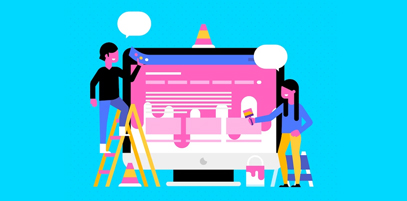User Acceptance Testing Explained
By :- Rajita Gupta

User Acceptance Testing (UAT) is the final stage in software or application development. It is also known as End-User, Application, or Beta testing. This final and critical phase in the web development process is where the intended users of the software or application evaluate its functionality and compatibility with their needs and expectations.
When it comes to web design and development, UAT involves a comprehensive assessment of the website or web app by the end-users. These users use the system under realistic conditions to verify that it meets their requirements and can support their tasks effectively.
This process helps to identify any issues or discrepancies from the user's perspective which might not have been apparent during the earlier stages of development. In the end, you’ll get award-winning websites of applications that your audiences will love.
Why Perform User Acceptance Testing?

Performing UAT is crucial for several reasons:
-
Validation of Requirements: UAT ensures that the developed system aligns with the user's requirements and expectations. It validates that the system is built as per the specifications and fulfils the user's needs.
-
Identifying User Interface Issues: Users may encounter difficulties in navigating the system or find certain features unintuitive. UAT helps uncover these issues, allowing developers to enhance the user interface and the user experience.
-
Reducing Risk of Failure: UAT reduces the risk of failure after launch by identifying and addressing issues before the system is deployed. It ensures that the system is ready for real-world use and can handle user interactions effectively.
-
Building Confidence: UAT builds confidence among stakeholders that the system is functioning as intended and is ready for deployment. It allows users to familiarize themselves with the system, further facilitating a smooth transition. This helps build credibility on your website.
Types of User Acceptance Testing

There are different types of User Acceptance Testing, each serving a unique purpose:
-
Alpha Testing: Conducted by internal teams within the organization, alpha testing involves simulating user scenarios and testing the system in a controlled environment.
-
Beta Testing: Also termed as field testing, beta testing involves releasing the system to a limited number of real end-users. Feedback from these users is then used to make final adjustments before a full-scale release.
-
Contract Acceptance Testing: This type of UAT is performed when a system is developed under contract. The system is tested against certain criteria defined in the contract, and acceptance is based on whether these criteria are met.
-
Operational Acceptance Testing: Also known as production acceptance testing, this type of UAT evaluates the system's workflow, recovery, maintenance, and usability aspects to ensure it is ready for operation and can withstand a live environment.
-
Regulation Acceptance Testing: This type of UAT is performed when a system must comply with certain regulations. The testing ensures that all regulatory requirements are met.
Conclusion
By involving the end-users in the testing process, UAT helps identify and rectify issues and builds user confidence in the system. As such, it is an essential step that should not be overlooked in any web design and development project.
Recent Topics
-
 WordPress.com Launches 100-Year Web Hosting Plan
WordPress.com Launches 100-Year Web Hosting PlanWordPress, the platform that helps people create websites, now offers something rare. It has taken a bold leap into the future with its 100-year web hosting plan. Yo...
Read MoreBy :- Laura Davidson
-
 5 Best AI Web Design Tools You Can Try
5 Best AI Web Design Tools You Can TryWhy bother with all the effort of creating websites manually when we have amazing AI tools? In fact, using these tools has become one of the most-practiced ...
Read MoreBy :- Tiana K
-
 Role of Animation and Micro-Interactions in User Experience
Role of Animation and Micro-Interactions in User ExperienceIn today's world, almost every brand wants to create a user-friendly interface for its customers. The main aim behind this is to increase customer base and revenue. Now, when it comes...
Read MoreBy :- Laura Davidson
-
 Web Design Trends to Watch Out for in 2024
Web Design Trends to Watch Out for in 2024Web design is a constant-evolving technology landscape. As a web designer, staying tuned with web design trends and keeping your designs up-to-date is important. These trends will affect ...
Read MoreBy :- Esther McGuinness
-
 The Power of Storytelling in Web Design Engaging Users with a Narrative
The Power of Storytelling in Web Design Engaging Users with a NarrativeStories never fail to engage listeners. That’s why web designers are leveraging the art of storytelling in their designs. In web designing, storytelling goes beyond merely usin...
Read MoreBy :- Navkiran Dhaliwal
-
 WordPress Releases Version 6.3 ?“Lionel”
WordPress Releases Version 6.3 ?“Lionel”WordPress 6.3 “Lionel” is out! Now, you’ll be able to create more beautiful and compelling websi...
Read MoreBy :- Tiana K
